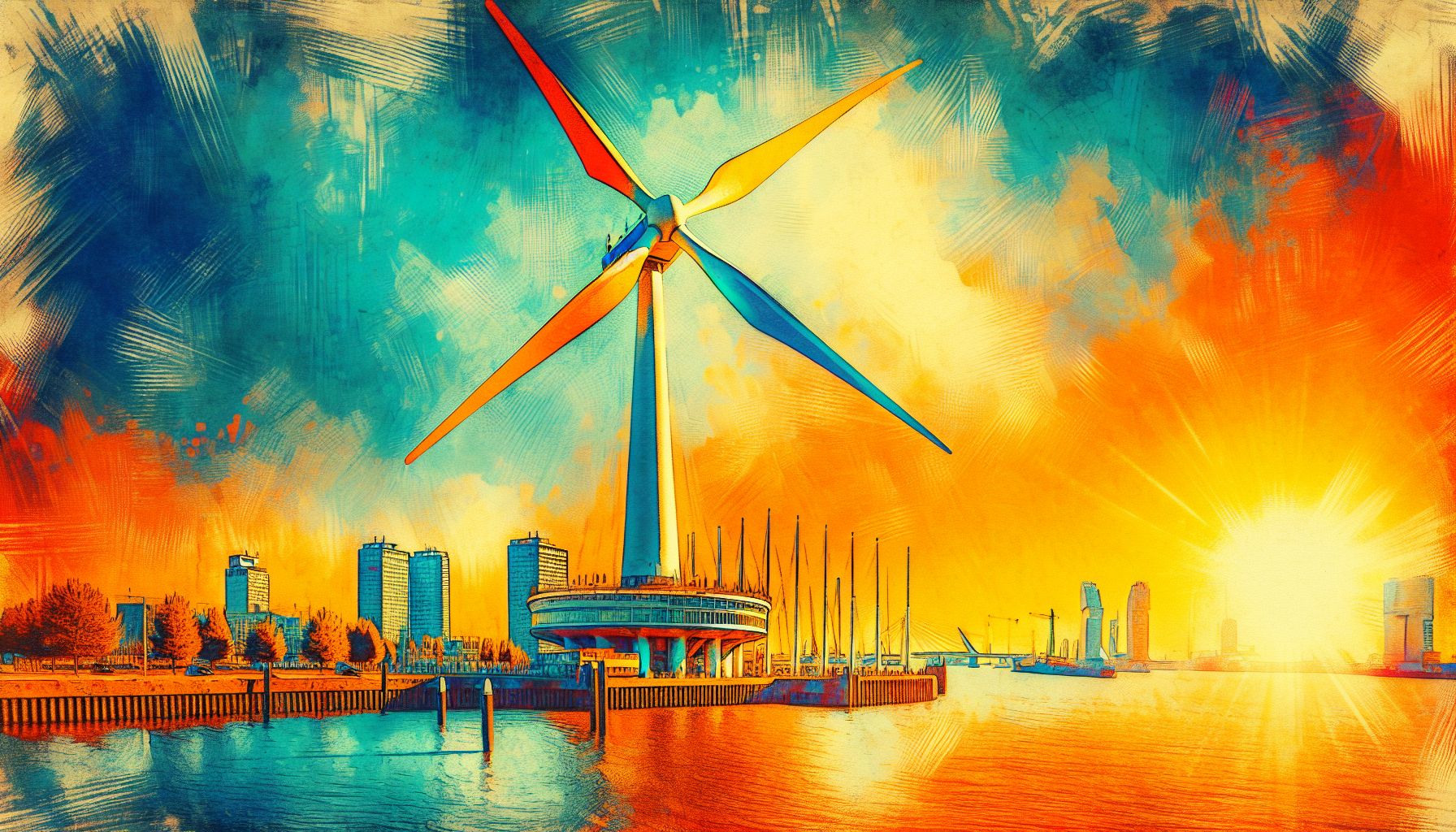Dutch Wind Wheel: Revolutionizing Sustainability and Tourism in Rotterdam

Rotterdam, Wednesday, 23 April 2025.
Discover how the Dutch Wind Wheel stands at 174 meters tall and integrates renewable energy with tourism, promoting sustainable architecture and expected to attract 1.5 million visitors annually.
Innovative Design and Sustainable Features
The Dutch Wind Wheel, currently under development in Rotterdam, Netherlands, represents a groundbreaking approach to sustainable architecture. Standing at an impressive height of 174 meters, this innovative structure incorporates dual outer facades designed to optimize energy collection and create naturally ventilated climate-controlled areas [1]. The building’s circular economy approach emphasizes the use of bio-based and secondary materials, setting new standards for sustainable construction [1].
Tourist Attraction and Economic Impact
A distinguishing feature of the Dutch Wind Wheel is its integration of 24 rotating cabins along the exterior, offering visitors panoramic views of Rotterdam’s skyline [1]. The structure includes a restaurant with spectacular vistas, combining sustainable innovation with tourism appeal [1]. Economic projections indicate the Wind Wheel will attract approximately 1.5 million visitors annually, generating significant employment opportunities throughout Rotterdam and the Netherlands [1]. The project exemplifies how sustainable architecture can serve as a catalyst for economic growth [2].
Development Status and Future Implications
As of April 23, 2025, the Dutch Wind Wheel remains in development [alert! ‘current construction status not specified in sources’]. The project, which was initially proposed in 2015 [2], requires extensive collaboration with major national companies and research establishments [1]. The initiative aims to showcase innovative Dutch technology while serving as a blueprint for future sustainable urban development [1][2].
Multi-functional Integration
The Dutch Wind Wheel’s design incorporates multiple functionalities, including apartments, hotels, and commercial spaces [1]. This mixed-use approach demonstrates how sustainable architecture can meet diverse urban needs while maintaining environmental consciousness [1]. The project stands as a testament to Rotterdam’s commitment to pioneering sustainable urban development and architectural innovation [2].

